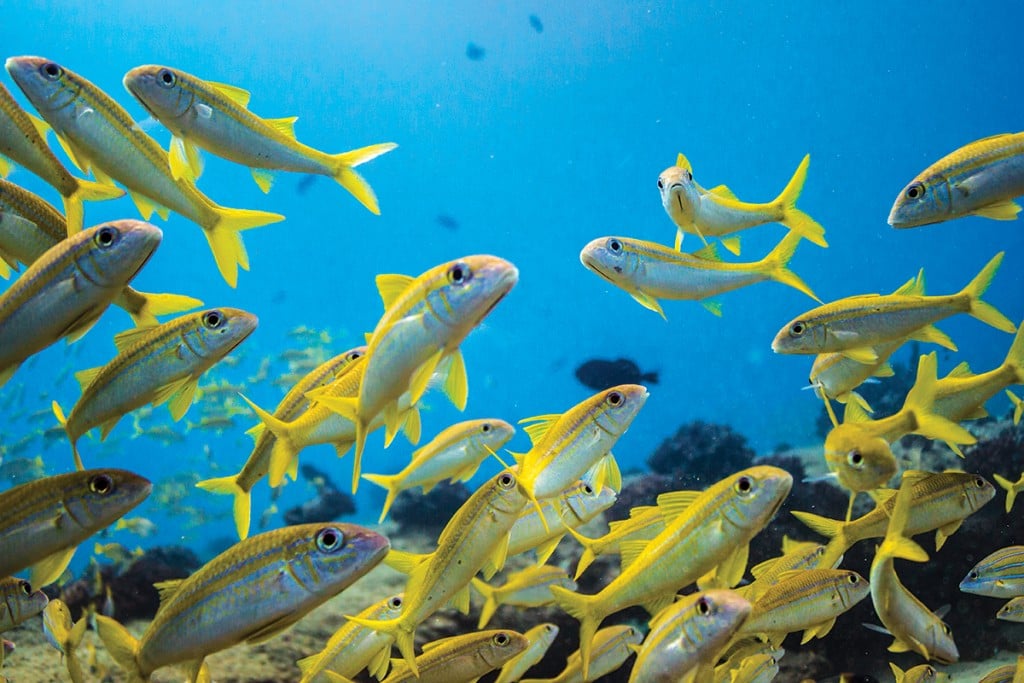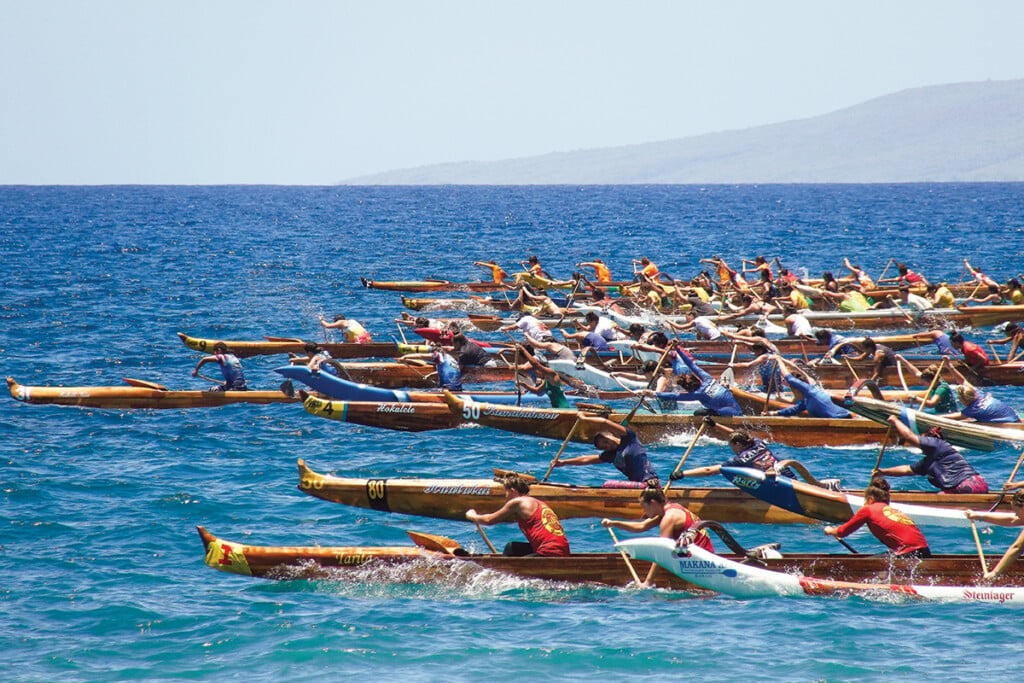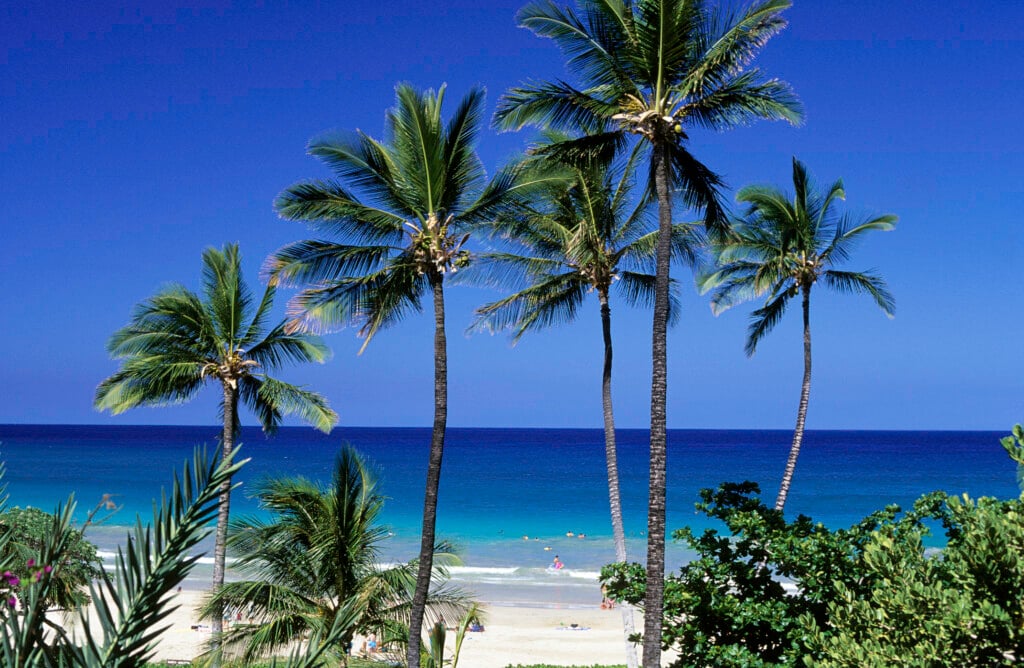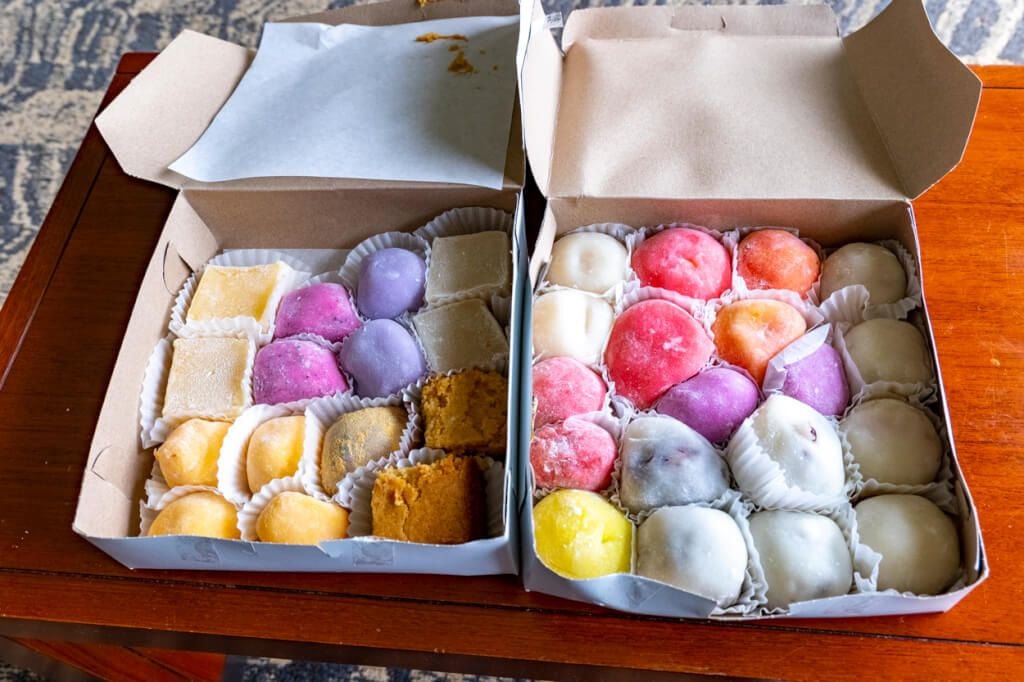How ‘Oama Season Brings Out the Spirit of ʻOhana
Juvenile goatfish season brings out Hawai‘i fishers of every age.

During ‘oama season in Hawai‘i, fishers line up knee-deep in calm waters to catch the little fish. Juvenile goatfish usually arrive in near-shore schools in summer, though some years not until August or September, and the big schools slowly disperse until there are few ‘oama left by the start of the new year. In those couple of months when ‘oama are at peak abundance, anglers of all ages share the water, trying to hook the fish for bait or dinner.
There are 10 species of goatfish in Hawai‘i waters. ‘Oama refers generally to juveniles of any goatfish species but is most often used in reference to weke ‘ā (yellowstripe goatfish) and weke ‘ula (yellowfin goatfish). These goatfish breed in the spring when waters are warmer, and the young fish congregate in the shallows in schools that can contain hundreds of fish. The Division of Aquatic Resources, which regulates shore fishing, considers goatfish under 7 inches long to be ‘oama (with the exception of Maui, where the max length is considered 8 inches). On any given day, an angler is allowed to take home up to 50 fish.
Shane Takasane, who was born and raised on O‘ahu, has been fishing ‘oama for as long as he can remember. Takasane was just a baby when his parents made a deal: If Dad wants to go fishing, he has to take the kids with him. So, Takasane grew up learning how to fish ‘oama from his father. Decades later, he still gives a portion of each catch to his dad.
The ones that don’t go to his dad are eaten or used for bait. Some locals eat the fish whole. Takasane pulls the guts out first, then fries the ‘oama and seasons it with salt, pepper and garlic. “It’s delicious. It tastes like fish chips on rice,” he says. Takasane’s daughter is a fisher in her own right; she learned the ropes from her dad and caught her first ‘oama on Hawai‘i Island. He says ‘oama is her favorite fish
to eat.
Brian Kimata says one of the best parts of ‘oama fishing is that it’s rare to go home empty-handed. Kimata owned and operated a fishing supply store on the outskirts of Waikīkī for 30 years. He says most people who fish ‘oama use one of two methods. Some will go out at night and scoop the fish using nets; people who prefer that method usually use the ‘oama for bait and try to avoid harming the fish with a hook. The other way is to use a small hand pole with light line, a small hook (he recommends a Mustad size No. 17) and a BB-sized split shot about 4 or 5 inches above the hook. Shrimp are commonly used as bait. Kimata said one of his tricks is to bring along a can of sardines and if the ‘oama aren’t biting, he mashes the sardines with his thumb and uses them to chum the water. He likened the effect to wafting the scent of pizza toward folks who insist they’re not hungry.
Fishing is about self-sufficiency for Takasane and he loves every opportunity to cast a line, but ‘oama fishing is special, he says, because it’s a family activity. He says it’s all about ‘ohana, and nothing beats lining up in the shallows, ‘oama poles in hand and just talking. “It’s a good opportunity,” he says. “We’re distant and so busy with our lives that we don’t have time to connect with our parents and our siblings. My family in general—my father, my sister, me, now my daughter and my nephew—like to go fishing. It kind of just brings everybody together.”
This story was originally published in our 2022 Summer issue. Buy a copy here.


